The 4 components of a grow room hid lighting system
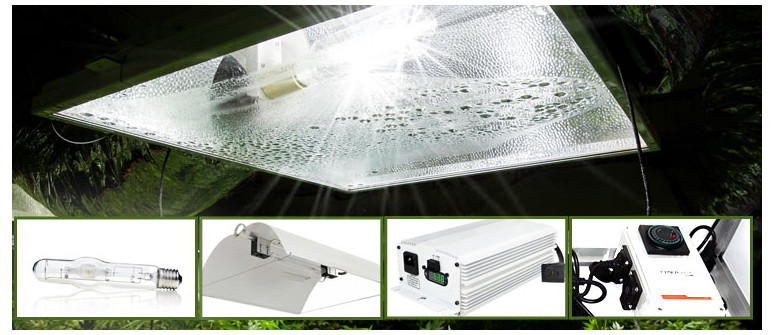
Growing great weed indoors relies primarily on a solid light source. Unfortunately, you'll need more than just a strong light bulb to keep your plants satisfied. A proper indoor HID lighting system consists of a bulb, reflector, ballast, and a timer.
If you’re growing weed indoors, you need to ensure your plants get enough light to develop and leave you with a solid harvest. The best way to do that, of course, is with a proper lighting system.
When it comes to providing light for your indoor plants you have 3 options: fluorescent lights, LED lights and HID lights. The third option, HID lighting, is by far the most popular among marijuana growers.
Here are the 4 main components every indoor HID lighting system needs.
BULB
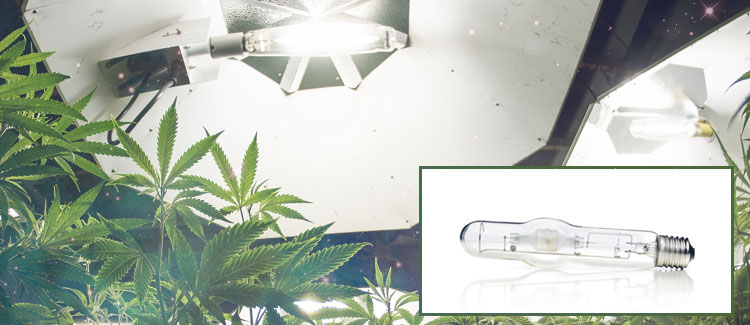
The light bulb is the most obvious part of a lighting system because it is what actually produces light for your plants. When it comes to growing cannabis indoors, the most commonly used light bulbs are high-intensity discharge lights (this includes high-pressure sodium - HPS - and ceramic metal halide lights - CMH -),
The type of lighting you choose for your indoor grow depends on your budget, how many plants you plan to grow, the setup you plan to use, and the results you’re looking to achieve. However, regardless of which kind of bulb you use, they all serve the same purpose.
The light produced by the bulb is directed at the plants who use it to photosynthesize and grow. The lights also play a key role in managing your plants’ life cycle by either keeping them in their vegetative state or forcing them to bloom.
Note: HID lamps tend to dominate the indoor growing market, especially among new growers. They are efficient and and provide bright, consistent light over large areas and require little maintenance. However, HID lamps are known to produce a lot of heat and therefore temperature control is often needed.
REFLECTOR
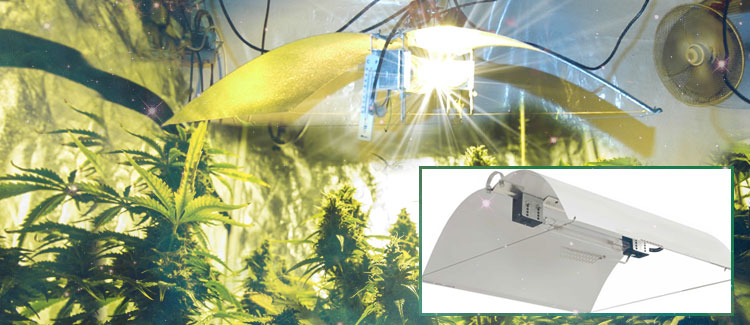
The reflector is another key part of an indoor lighting system. It serves a simple, yet very important purpose—to reflect as much light from your bulb onto your plants as possible. By using a reflector, you can greatly increase the efficiency of your grow lights, which results in faster growth and bigger, better harvests.
There are a variety of different reflectors on the market: wing reflectors, hood reflectors, umbrella reflectors just to name a few. If heat is a problem in your grow room, you can choose for an air cooled reflector.
BALLAST
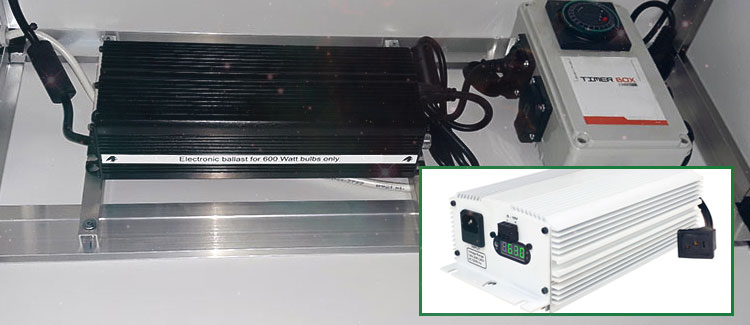
A ballast regulates the electrical circuit powering your lighting system and essentially powers your light bulbs, so every grow light needs one. If you’re using fluorescent or LED lights, however, the ballast will be built into your lamps already. If, like most growers, you use HID bulbs, you’ll need to use an external ballast to power your lights.
Without going into too much detail, here’s a basic explanation of how a ballast works. When you first turn on an HPS lamp, for example, the bulb needs a high enough voltage to strike the ceramic arc tube in the middle of the lamp. This high enough voltage allows the sodium within the tube to melt and vaporize.
Once the sodium is vaporized and in a gaseous state, the lamp needs much less voltage to continue running. This is where the ballast comes in again, as it drops the voltage of the circuit to make sure the lamp doesn’t increase in intensity and eventually blow. Instead, it regulates the power supply and ensures the lamp always has a steady energy supply to run smoothly.
Timer
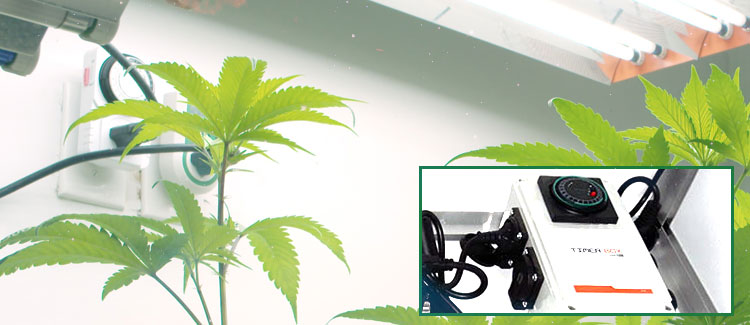
Timers are necessary to ensure your plants receive the appropriate photoperiod for their particular stage of growth. The vegetation phase requires an 18-6 light cycle. The 18 hours of “daylight” keeps plants in vegetative growth. The flowering phase requires a 12-12 light cycle. The 12 hours of daylight triggers flowering hormones, and plants start producing calyxes, which accumulate into lovely nuggets.
Using a timer guarantees that lights turn on and off in the correct cycle and at the same time each day. Turning lights on and off manually isn’t always feasible, and forgetting to do so can result in days of lost grow time. Also, plants can slow growth due to shock when the on/off times are unintentionally staggered from day to day.
Use a timer. They make for a trouble-free photo cycle. It is always tempting to save money by buying cheaper units. However, it is highly recommended to spend a bit more and acquire a sturdy unit. A timer breaking down can ruin your crop due to stress and shock. Some high tech units can be linked to the other compulsory systems. They can be used for running the lights, irrigation, fans, and environment modifiers like heaters, coolers, and humidifiers.
Buy quality products at the beginning. You get what you pay for with cheap timers, and they will need to be replaced often. Make sure the wiring available for your grow space is in good condition and of a correct wattage. Don’t overload circuitry as this can be a fire hazard. Overall, make sure that all wiring is done correctly and with attention to detail.
Warning
Growing cannabis can be dangerous as it combines two mortal enemies: water and electricity. Be sure that no water can come into contact with any electrical device.
- Use quality products and check them regularly
- No possibility for contact with water
- Electricity network at location is suited/built/in good shape for high Wattages
- Connect all wires correct
.jpg)
.jpg)

.jpg)
